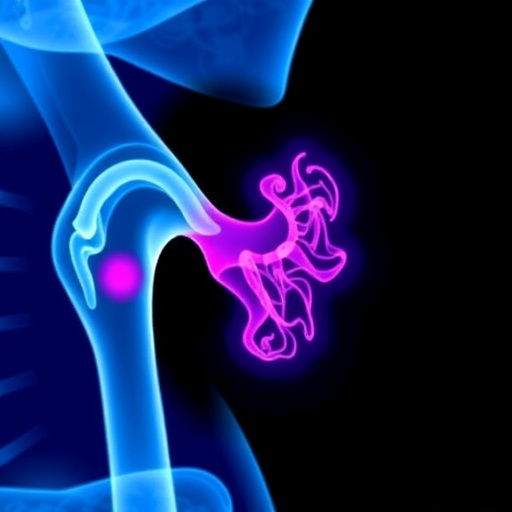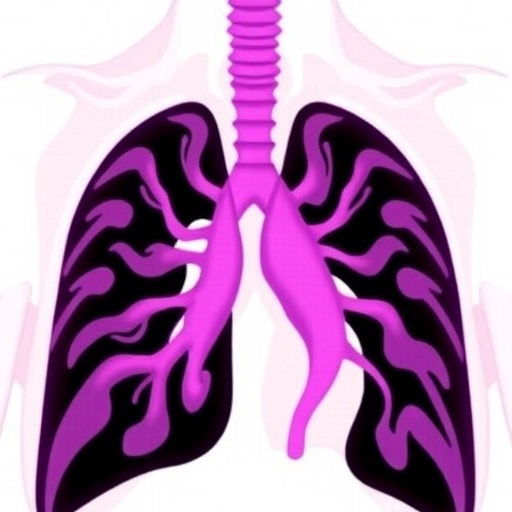
In a groundbreaking study poised to reshape the prognostic landscape of cervical squamous cell carcinoma (CSCC), researchers have unveiled new insights correlating tumor infiltration depth with patient survival outcomes. The investigation, conducted retrospectively on an extensive cohort, meticulously dissects the complex interplay between tumor characteristics and their prognostic significance. This novel approach underscores the nuanced impact of tumor invasion patterns on therapeutic strategies and survival probabilities.
Cervical squamous cell carcinoma remains a formidable challenge worldwide due to its heterogeneous clinical behavior and varied response to treatment modalities. Traditional prognostic models have often treated tumor infiltration depth as a uniform factor; however, this recent study emphasizes that the depth of stromal penetration dramatically modifies the prognostic value of other risk indicators, prompting a more stratified clinical assessment.
The research analyzed data from 621 patients, treated over a seven-year interval, segmenting them into two distinct groups based on the degree of cervical stromal wall infiltration. Group 1 consisted of individuals exhibiting complete full-thickness infiltration, representing the most invasive disease phenotype. In contrast, Group 2 encompassed patients with partial stromal infiltration, defining a less advanced pathology. This dichotomous classification allowed for a refined exploration of how prognostic variables differ with tumor extent.
A central revelation from the multivariate Cox regression survival analysis was the identification of lymph node metastasis as a robust, consistent prognostic factor irrespective of infiltration depth. This finding reinforces the critical importance of nodal involvement in forecasting clinical trajectories and highlights lymphatic spread as a prime target for therapeutic intervention.
Remarkably, within the cohort experiencing complete full-thickness infiltration (Group 1), additional factors emerged as independent predictors of adverse outcomes. These included extensive tumor volume exceeding 30.8 cm³ and vaginal invasion, both correlating with significantly heightened 5-year mortality risks. Such insights champion the integration of volumetric and invasion metrics into staging and treatment planning for advanced cases.
The pronounced effect of tumor volume on survival suggests that the spatial extent of cancer burden intricately influences biological behavior and disease progression in deeply infiltrative tumors. Larger tumor mass may reflect a more aggressive phenotype, increased cellular heterogeneity, and potential resistance to conventional therapies, thereby necessitating tailored treatment intensification.
Vaginal invasion corresponds to the tumor’s capacity to breach anatomical boundaries beyond the cervix, signaling an elevated propensity for local spread and recurrence. Its prognostic weight in full-thickness infiltration cases establishes it as an essential criterion for risk stratification and postoperative management considerations.
Interestingly, the study noted that in patients with partial stromal infiltration (Group 2), lymph node metastasis singularly dictated 5-year survival outcomes. This exclusive prominence suggests that for lesser degrees of infiltration, nodal spread remains the primary determinant of prognosis, while other pathological parameters exert diminished influence.
The differential prognostic landscape unveiled by the study advocates for a dynamic approach to postoperative therapy, contingent on infiltration status. For patients demonstrating serosal or full-thickness infiltration, the data supports concurrent chemoradiotherapy targeting those with large tumor volumes or vaginal invasion—even when other high-risk factors are absent—to augment local control and mitigate distant metastasis.
This treatment paradigm adjustment embodies precision oncology ideals, tailoring adjuvant interventions to specific risk profiles identified through detailed histopathological evaluation. Such stratification promises to enhance survival rates by preemptively addressing micro-metastatic disease reservoirs and residual tumor foci.
Moreover, the emerging association between increasing infiltration depth and the augmented prognostic relevance of vascular involvement and pathological grade further enriches the prognostic framework. These factors, indicative of tumor aggressiveness and biological behavior, attain greater significance in advanced disease, bolstering their utility in guiding clinical decisions.
The implications of integrating tumor volume, vaginal invasion, vascular involvement, and grading into prognostic models are profound. It encourages multidisciplinary collaborations involving pathologists, oncologists, and radiologists to develop comprehensive risk profiles that inform individualized treatment regimens.
Despite these advancements, the study’s retrospective design highlights the need for prospective validation to cement these findings into clinical guidelines. Future research could expand on molecular correlates underpinning these pathological features, potentially uncovering actionable targets for novel therapeutics.
Ultimately, this investigation propels a paradigm shift in managing cervical squamous cell carcinoma by elucidating how distinct tumor infiltration depths modulate risk factors. It elevates the conversation from a simplistic anatomical focus to embracing the intricate biological heterogeneity that dictates patient outcomes.
This refined prognostic stratification not only optimizes therapeutic decision-making but also fosters patient-centered care by identifying subgroups that may benefit from intensified or de-escalated treatment approaches. Such granularity marks a significant milestone in the relentless pursuit of prolonged survival and enhanced quality of life for CSCC patients.
As cervical cancer continues to impose a global health burden, studies of this caliber shine a spotlight on the critical role of detailed pathological assessment in combatting this malignancy. Harnessing these insights into clinical practice promises to transcend current limitations, delivering hope through precision and personalization.
In conclusion, the compelling evidence presented herein challenges existing paradigms and invites the oncology community to reconsider how tumor infiltration depth influences the prognostic relevance of key risk factors. The resultant therapeutic ramifications hold substantial promise for transforming clinical outcomes for women worldwide afflicted by cervical squamous cell carcinoma.
Subject of Research: Prognostic value of risk factors in cervical squamous cell carcinoma stratified by tumor infiltration depth.
Article Title: Prognostic value of risk factors in cervical squamous cell carcinoma based on tumour infiltration depth.
Article References:
Yang, Q., Han, X. Prognostic value of risk factors in cervical squamous cell carcinoma based on tumour infiltration depth. BMC Cancer 25, 1412 (2025). https://doi.org/10.1186/s12885-025-14849-8
Image Credits: Scienmag.com
DOI: https://doi.org/10.1186/s12885-025-14849-8
Tags: cervical squamous cell carcinoma prognosisfull-thickness infiltration cervical cancerpartial stromal infiltration prognosispatient survival outcomes cervical cancerprognostic significance tumor characteristicsretrospective study cervical cancerstratified clinical assessment cervical cancerstromal penetration cervical cancertreatment modalities cervical cancertumor depth risk assessmenttumor infiltration depth cervical cancertumor invasion patterns survival outcomes




